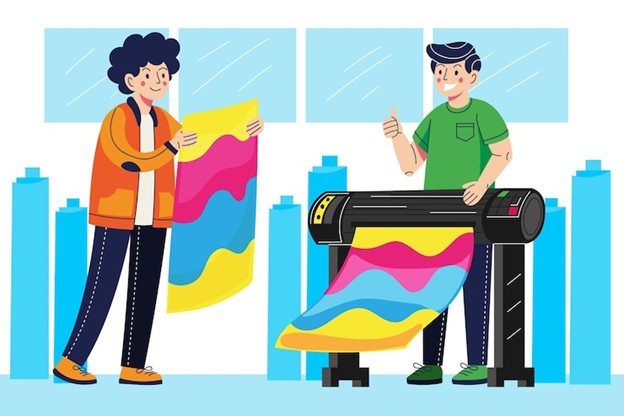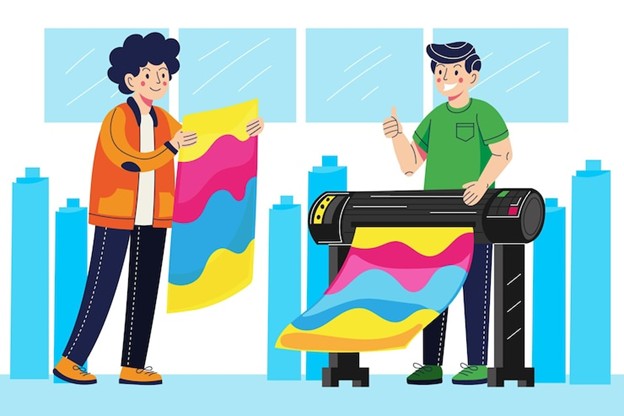
How to Price Your UV DTF Transfer Products for Maximum Profit
You’re in the middle of quoting a big B2B order. The client wants volume, expects a discount, and you’re crunching numbers, wondering, “Am I still making a healthy profit here, or am I silently bleeding margins?”
You’re not alone in that struggle. Most UV DTF transfer business owners hit that wall at some point — balancing competitive pricing with profitability feels like walking a tightrope, eyes blindfolded, every step a guess.
Now, imagine a different scenario. You confidently quote each order, fully aware of how each line item translates to profit. No nagging doubt. No anxious undercutting. Just rock-solid margins and clients who value your pricing because they understand the quality behind it.
That’s exactly where this guide will take you.
Understanding the True Cost of UV DTF Transfers
Before any savvy pricing strategy can be built, it’s crucial to crack open the actual cost structure behind your UV DTF Transfers. Miss one ingredient, and you’re setting yourself up for underpricing traps.
Direct Costs: These are your “bread and butter” costs — tangible, trackable, and the easiest to spot. Think:
- UV inks, PET films, adhesive powders.
- Labor hours spent on printing, curing, cutting.
- Machine runtime: energy usage, print head wear-and-tear.
Indirect Costs: These are sneakier, less visible, but just as critical.
- Overhead: rent, utilities, insurance.
- Shipping: both raw material freight and order delivery.
- Admin & marketing: sales team commissions, software subscriptions, marketing campaigns.
Hidden Costs: Ah, the often overlooked budget sinkholes.
- Equipment depreciation: UV printers, laminators aren’t immortal. Factor in their lifespan and replacement costs.
- Spoilage: misprints, rejected batches, client returns.
- Maintenance & downtime: repairs, recalibration, cleaning cycles.
Here’s where many B2B UV DTF transfer businesses falter—they track direct costs religiously but fail to integrate hidden costs. A small underestimation compounded over multiple orders could quietly devour your margins.
Pro Tip: For every quarter, audit your total production and operational expenses. Don’t rely solely on monthly snapshots—they miss patterns like seasonal material price hikes or cumulative maintenance fees.
Popular B2B Pricing Models (Explained for UV DTF Businesses)
Pricing models aren’t one-size-fits-all. What works beautifully for a mass-producer might crush a boutique shop. Let’s break down the most practical models for UV DTF Transfers:
1. Cost-Plus Pricing
Straightforward: add a markup percentage on top of total costs. You’re guaranteed a baseline profit. The simplicity is appealing, but here’s the catch—if your costs shift and you don’t adjust regularly, you risk margin erosion.
Best For: Businesses new to the market needing predictable margins.
2. Value-Based Pricing
Now, flip the perspective. Instead of costs, focus on the value perceived by your clients. High-end clients may be willing to pay premium rates for superior durability, vibrant prints, or customization.
Best For: UV DTF Transfers brands differentiating on quality, uniqueness, or service rather than price.
3. Tiered/Bulk Pricing
Discount structures based on volume tiers. While appealing, poorly calculated discounts often gut profits.
Best For: B2B clients placing recurring or large-volume orders—but only when you’ve precisely factored in scale efficiencies (think material bulk buying discounts, labor optimization).
4. Competitive Pricing
This approach keeps your rates aligned with market averages. But it’s the riskiest model if followed blindly—it often leads to “race-to-the-bottom” price wars.
Best For: Highly commoditized markets where differentiation is low and brand loyalty hinges on pricing alone (not ideal for most UV DTF Transfers businesses).
Here’s the kicker: Successful businesses often blend models. For example, a core cost-plus baseline combined with value-based premiums on custom orders and carefully structured bulk discounts.
How to Calculate Optimal Profit Margins (Step-by-Step)
Numbers can feel intimidating, so here’s a clear, repeatable method tailored for UV DTF Transfers businesses:
Step 1: Total Cost Per Square Inch Calculation
Sum up:
- Direct costs per unit area.
- Indirect costs allocated per unit (divide total overhead by estimated monthly output).
- Hidden costs prorated over output (equipment depreciation, spoilage percentages).
Step 2: Establish Minimum Viable Profit
A safe starting range for B2B UV DTF Transfers is 30% to 50% gross margin, depending on business size and risk tolerance.
- Small operations: Typically target 50% due to lower volume but higher flexibility.
- Medium businesses: Can sustainably run at 40%-45% margin, thanks to economies of scale.
- Large producers: 30%-35% is viable when material and labor efficiencies peak.
Step 3: Adjust for Volume Orders
Volume discounts shouldn’t simply be “gut-feel.” Calculate the actual reduction in per-unit cost when materials, labor, and shipping scale. Only offer discounts from the margin buffer without dipping below the minimum threshold.
Step 4: Factor in Market Fluctuations
Keep a dynamic buffer—material costs fluctuate, supply chains hiccup. Quarterly price reviews are crucial. Better to adjust in small increments than suffer a margin hemorrhage over a year.
Pricing Pitfalls to Avoid in UV DTF Transfers
1. Bulk Discount Miscalculations:
Over-discounting without accounting for overhead dilution. Volume might cover material costs, but it won’t magically cover admin, shipping, or maintenance.
2. Underpricing Due to Incomplete Cost Analysis:
Ignoring indirect and hidden costs. That seemingly “competitive” price may mean working for pennies on the dollar once depreciation and spoilage are factored in.
3. Overlooking Custom Order Complexities:
Custom colors, intricate patterns, or unique substrates eat into labor and machine time. Charging flat rates across standard and custom orders leaves money on the table.
4. Failing to Adjust Prices as Costs Evolve:
Material prices spike? Overhead increases? If your price hasn’t shifted in six months, odds are inflation’s been silently nibbling your margins.
5. Falling Into “Race-to-the-Bottom” Price Wars:
Trying to outprice every competitor? It’s a fast track to profit starvation. Instead, double down on quality, service, and unique offerings.

Psychological Pricing Strategies in the B2B UV Market
Numbers aren’t just numbers—they’re perceptions. And perception drives B2B buying decisions more than you’d think.
Anchoring Strategy:
Introduce premium package options at the top tier—even if most clients opt for middle-tier deals, the high anchor makes mid-tier feel “safer” yet valuable.
Price Range Framing:
Instead of fixed quotes, present ranges (e.g., “$0.40-$0.50 per square inch depending on order size and customization”). It subtly shifts focus from price alone to value variables.
Simplify Options:
Offering too many pricing tiers confuses B2B buyers. Keep it clean—three tiers max. Clarity enhances perceived trust and professionalism.
Packaging Perceived Value:
Bundle complementary services—design assistance, rush processing, premium materials—to justify higher price points without nickel-and-diming clients.
Consistency in Pricing Communication:
Avoid sudden, unexplained price shifts. Always provide rationale—market conditions, material upgrades, enhanced service. Transparency builds long-term loyalty.
Conclusion: Pricing Smart Is Profit Power
Pricing UV DTF Transfers isn’t a static formula. It’s a dynamic, multi-layered strategy rooted in knowing every cost, choosing flexible yet sustainable models, avoiding common traps, and understanding the psychology behind B2B buying behaviors.
Master this, and you’re not just quoting prices—you’re steering profitability, client trust, and long-term scalability with confidence.
So, next time you face that blinking cursor and a looming bulk order quote, remember: each number is a lever. Use it wisely, and watch your margins transform.


